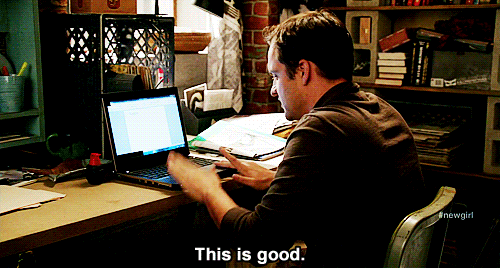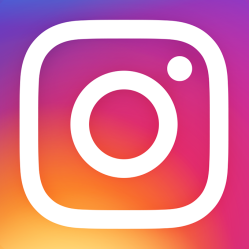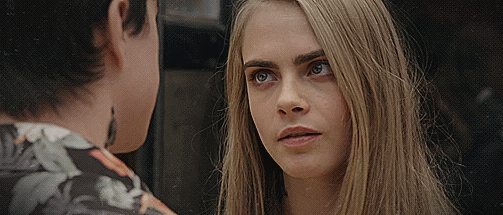 (Note: This is based on one of the prompts from Robert S. Kaplan’s book What You’re Really Meant to Do.)
(Note: This is based on one of the prompts from Robert S. Kaplan’s book What You’re Really Meant to Do.)
I’d like to think I have a decent reputation among the people I’ve worked with, either coworkers at whatever agency or other company I’ve been at or the clients I’ve interacted with and provided counsel to. If I’m right on that front then I’m hoping it has something to do with the fact that I’ve regularly made it clear the work I’m doing and the advice I’m giving are based squarely in some core values.
Honest Opinions
If I’m telling you “I think you should do X” it means “I think you should do X.” My guiding principle in the workplace is that what’s good for you is good for me. If I help my clients succeed then I can feel good about the role I played in that success.
That might sound a bit simplistic or even naive, but it’s rooted in the way I was raised, that it was the work that mattered above all else. It’s in no one’s best interests if I give bad advice just because it’s what someone might be expecting to hear. I’m going to be on the hook for a program I don’t believe in and I haven’t pushed my client’s thinking at all. If you hired me, you get me, so buckle up. Yes, I might be a bit overly informal at times, I’ll admit that. But that doesn’t mean I’m not being honest.
Ethical Advice
I’ve seen too many trade news stories about companies being hammered for acting unethically for me to ever even consider going down that road. The client gets hurt, I get hurt.
Not just that, but I’m the one who has to look at myself in the mirror when I’m shaving, as the saying goes, and don’t need the baggage of having advised a client to violate clear guidelines.
What does that ethical advice look like? Well, it means the following:
- Transparency: I have never and will never advise anyone engage in practices that don’t adhere to both the letter and spirit of disclosure laws. Influencer programs are a big tactic where this comes into play along with paid ads, particularly where a third-party is buying space in a company’s content program.
- No Bait and Switch: The trust between the company and its audience is the only thing that keeps content marketing operating. Never violate by misleading them as to what a link they’re asked to click on will have or otherwise dupe them into taking an action. You don’t get a second bite at this apple.
- No Pretending: I like bylines on blog posts. I don’t care for character profiles, where a fictional character is supposed to be operating a Facebook page. Captain Crunch isn’t real, folks, and doesn’t Tweet. Let’s drop some fictions that might seem clever in a marketing team meeting and be clear it’s the marketing team speaking on behalf of the brand or IP or that Bob is the one who wrote that blog post.
- Clear Reporting: Yes, ethics applies to behind-the-scenes operations as well. I don’t believe in blowing sunshine up anyone’s skirts when it comes to reporting on a program or campaign. Whether we succeeded or failed, everyone deserves honest numbers. Every future execution is built on the foundation of what’s come before and if I start fudging numbers then the guidance I give you tomorrow will be based on a fiction.
No Shiny Objects
Everything gets its own hype cycle. Remember January of 2016 when Peach was the hottest thing on the mobile web for about three hours before fading into obscurity? Or the repeated attempts something like Ello has made to break into the mainstream? Apps, social networks and other tools that might potentially be relevant to content marketers launch all the time. Each is accompanied by not just a wave of press but a following wave of people all too eager to hail it as the next big thing and pitch their clients on making it a core part of a program.
I’ve always taken a more measured approach. Let’s see if the heat of attention keeps up for more than six months. Let’s see what the usage numbers and demographics look like at that time. Let’s figure out how our current content mix might need to be realigned to accommodate its role without cannibalizing material and disappointing the audience. Let’s figure out what some success metrics might look like. In other words, let’s figure out why we would want to use it, what *new* audience we’re reaching and how it’s acting in service to not just program but also business goals.
In The End, It’s Good To Have Guidelines
Having these as just some of my core values has served me pretty well over the course of my career. I’m sure there are instances where someone else’s vague counsel has seemed more appealing because it effectively scratches itching ears.
There are plenty of people out there who have been incredibly successful, more so than I have, by selling snake oil. They’ll look the other way when a client proposes not disclosing paid influencer program or something along those lines. They’ll put together 38 page decks on why clients need to go all-in on this new social network three days after it’s launched. Usually, though, those people aren’t the ones who are held accountable for results, having passed program management off to another agency or team.
So my commitment to these and other principles is driven because I’m the one who’s sticking around. Essentially, if I’m not comfortable giving particular counsel it’s because I’m not willing to execute it. Even the few times that hasn’t been the case, it’s how my thinking has operated. I’m not going to put myself in the position of doing something unethical and I’m damn sure not going to put anyone else in that position.



 Overtime those documents grew and evolved. At first they were pretty simple but as social networks became more and more complex and added new features and functionality they needed to keep up. There were a couple times over the following six years that I tore them down to the studs and rewrote them from scratch because the format wasn’t working for me anymore. Some were discarded entirely because the network was shut down (cough : Friendfeed : cough) while new ones were added.
Overtime those documents grew and evolved. At first they were pretty simple but as social networks became more and more complex and added new features and functionality they needed to keep up. There were a couple times over the following six years that I tore them down to the studs and rewrote them from scratch because the format wasn’t working for me anymore. Some were discarded entirely because the network was shut down (cough : Friendfeed : cough) while new ones were added. After receiving reassurance these documents weren’t being used any longer I’m going to be sharing those documents here and keeping them updated on this site. They will be publicly-facing resources to anyone looking for quick, easily-digestible downloads with the information they’re looking for on the most popular apps around today. Also, selfishly, they will become part of my online portfolio, showing some of my technical writing capabilities.
After receiving reassurance these documents weren’t being used any longer I’m going to be sharing those documents here and keeping them updated on this site. They will be publicly-facing resources to anyone looking for quick, easily-digestible downloads with the information they’re looking for on the most popular apps around today. Also, selfishly, they will become part of my online portfolio, showing some of my technical writing capabilities. (Note: This is based on one of the prompts from Robert S. Kaplan’s book
(Note: This is based on one of the prompts from Robert S. Kaplan’s book
